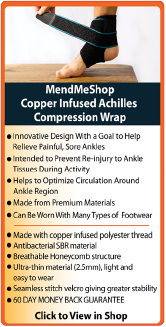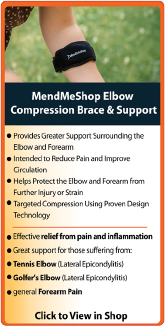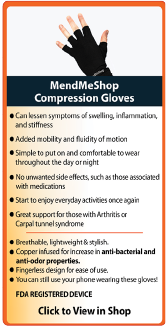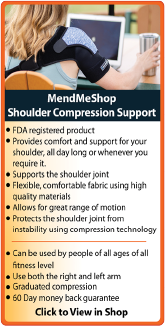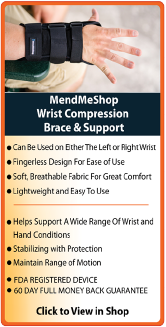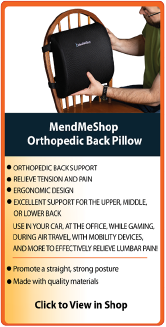|
|
Rehabilitation Exercises / Stretches for the KneeBring Back Full MovementPain can restrict your leg and knees range of motion, you hurt so you don't move. Pain free range of motion exercises are your best friend and can get you on the road to recovery from your meniscus injury. Any injury to tissue is in a weakened and fragile state as healing starts and your body will quickly fill in the tears or strains with scar tissue. So using your knee if even only a bit, any pain-free movement is good for your knee! The golden rule for the best chance of successful recovery from meniscus damage is to increase flexibility, tissue strength and range of motion. Passive knee stretching assists in complete and full recovery for:
Before making the transition to crutches, physical therapists prescribe gentle stretching of an injured knee or hip, and if no device is available, they usually prescribe heel slides. They don't prescribe this to annoy you - it is in fact the most important part of knee injury recovery. You probably know of someone that chose not to do these stretches as it is common - and they paid a high price for it. By not listening to the therapist (ie. not stretching), there is a huge chance of re-injuring your knee or even sustaining an injury greater than the original injury ever was. Passive knee stretching not only helps minimize the growth of scar tissue, but it also increases the elasticity and strength of the joint. After using streches over time, your knee joint will be better prepared to handle higher and higher loads. Eventually you will reach a stage where your knee joint can handle crutches or standing for longer and longer period of time. This is the final stage of recovery and depending on age, the nature of the injury, your weight and many other factors, it can take the longest time to complete. But remember, for knee injuries, it pays to be patient! Rushing your knee injury recovery almost never pays. Stretch At Home To Maintain Range of Motion & Minimize Scar Tissue Build-Up The final step in meniscus rehabilitation is stretching - this is a critical step for complete recovery from your medial meniscus tear! When your meniscus is injured, stretching plays a huge role in treating your injury with or without surgery... This is especially true if you're immobilizing your knee after surgery with a cast, brace or by using crutches. Long-term immobilization of your knee can lead to massive amounts of scar tissue that stiffens all of the tissue in your knee causing your surrounding muscles to atrophy (waste away). For many people stretching seems like a basic thing but you'd be surprised by how many people there are that don't understand the importance of stretching a medial meniscus injury, especially after surgery. Each of your legs support an intense amount of weight everyday. When you suffer from a meniscus injury in your knee you're unable to support your own weight in the same way you used to. This can make simple tasks like walking or even standing extremely difficult for you. A full recovery from your meniscus injury (especially after surgery) depends on your commitment to stretching and strengthening exercises. 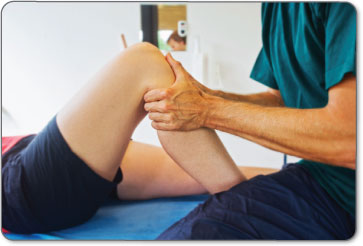 Physical therapists prescribe gentle stretching of your knee before making the transition to crutches after surgery and as you recover from having to use immobilization tools like a knee brace. They don't prescribe this to annoy you - it's in fact the most important part of your recovery. You probably know someone that chose not to do any stretching - and they paid a high price for it. By not listening to their therapist (i.e. not stretching), there is a huge chance of re-injuring your meniscus or even getting a more serious injury than your original meniscus tear. Ask any physical therapist and they'll tell you the key to a successful recovery is commitment to exercise at home. Passive Knee Stretching is Intended to Help in the following areas:
When You Use Passive Knee Stretching, your goal is to:
Why Consider Using a TShellz Wrap® (Heat) On Your Knee?HEAT (warmth) is used after you've reduced your swelling / inflammation and the sharp pain is less intense (you have more of a dull / nagging ache and soft tissue tightness in your knee). Warming up soft tissue results in increased blood flow circulation as the body sends more blood to attempt to remove this same heat. It's the blood in your body that will bring oxygen, nutrients and water (basically energy) to deep soft tissue - blood flow is what the body uses to repair tissue. When heat is applied to the knee, veins will start to get bigger (expand) to allow more blood flow through the area. This in turn relaxes your knee, making the tissue more flexible and elastic. This is why heat is used on older (chronic) injuries, to loosen tissue and bring in the blood flow needed for healing. Your body will begin to heal itself after it is injured - increasing your blood flow will speed up this natural process - often surprisingly well. Doctors usually call this process 'Vasodilation'. Heat can Make Inflammation, Swelling and Newer Injuries Worse - How? When we injure ourselves, we start healing right away. The body will naturally raise the temperature at the site of the injury resulting in the inflammatory response (redness, heat sensation, inflammation and swelling). This 'fake fever' leaks blood flow to the area to cool it down and start the healing process. Adding 'heat' to your knee when it's already inflamed and tender may make your body think there's a new threat to your tissue and increase the pain in order to get you to stop. For some people applying heat on inflamed / swollen tissue will cause the injury to swell-up even more (as much as 3 times larger than normal). You'll feel even more pain as the pressure builds in your knee. Heat is NOT a good treatment method for inflamed soft tissue, new injuries (within the first 24 to 72 hours), right after surgery or right after a re-injury (over-use and/or sharp, throbbing pain). In these cases, heat should be applied later on in the healing cycle. In the meantime, use a Cold Compress or Ice Pack to decrease any inflammation induced pain. When To Use HeatA TShellz Wrap® temperature treatment works best to increase blood flow circulation and stimulate the bodys healing response for older (chronic) injuries, re-injury (after swelling has been reduced) and during long-term post surgery recovery. Warmer temperatures should not be used until at least 3 to 5 days after you first have the injury. Heat should not be started for a least 2 weeks after surgery because inflammation levels will be very high as the healing process starts over again. Any use of heat should also be combined with gradual movement to stretch out your knee and increase range of motion. If you have a chronic knee injury that keeps getting re-injured you should use heat before activity to loosen up your tissue (making it more flexible). When used at this time the warm temperatures naturally extend the elasticity (elastic-nature) of the joint, making it more movable / pliable for activity. Sometimes we feel pain while doing a certain activity - should you still use heat? Using heat in the morning before you start your day or before activity can help to boost the healing process and reduce your risk of re-injury. Too much heat (especially when you suffer a set-back with swelling / inflammation) can make your inflammation worse. Cold treatments with a Cold Compress or Ice Pack should be used part-way through your day when you suffer from on-going pain and inflammation as a natural pain-reliever. Keep using Circulation Boost before activity and when you notice any stiffness in your knee to 'warm up' your muscles, tendons & ligaments - this will aid in a reduction of reinjury risk and contribute overall to a faster recovery (less reinjury = faster recovery). Rehabilitation Exercise for the KneePhysical therapy is a beneficial way to restore atrophied muscles and improve strength and mobility during knee rehabiltation. The type of physical therapy and the duration will be dependent on the tissue damage and your symptoms. When you are treating or recovering from a meniscus injury, it is important to ensure you do not perform any exercises that will further irritate the meniscus or possible cause reinjury. Once your pain starts to diminish, a physiotherapist will set up an individualized strengthening and stretching exercise program for you to perform at home or in the gym. This will be based on your needs and abilities, and will help you return to performing your normal routines. Individuals will often lift weights on their own, to try and build up their strength. However, in doing so, they can do more damage to their joint. It is extremely important to strengthen your muscles properly, as they may have weakened during the period of non-use. A trained therapist will help to ensure your rehabilitation process is appropriate and effective. For best, long term results use TShellz Wraps® at home, in conjunction with physical therapy and an exercise program. Learn More About Meniscus Injuries & TreatmentsI want to learn more about Post-Surgery Recovery I want to learn all about Types, Patterns, Shapes & Severity of Meniscus Tears I want to learn more about TShellz Wrap® Circulatory Boost I want to learn more about Ice & Heat: Which Is Better For Treatment? I want to learn more about Meniscus Treatments I want to learn more about different types of Meniscus Surgery
|
 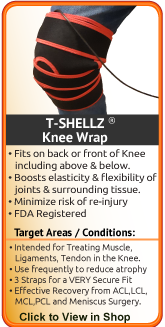  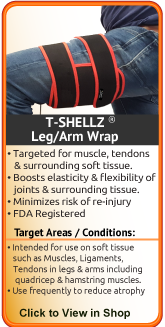    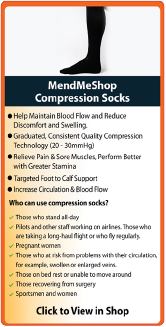 |

